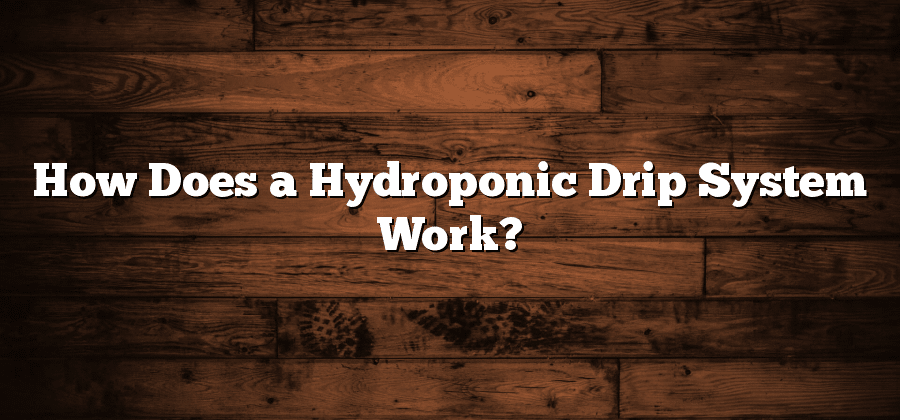Reservoir: The main water storage unit for the hydroponic drip system.
Hydroponic drip systems are gaining popularity among indoor gardeners due to their efficient and controlled water delivery mechanism. The reservoir serves as the cornerstone of this system, acting as the primary water storage unit. Its role is crucial in providing a constant supply of nutrient-rich water to the plants.
The reservoir, typically made of sturdy materials such as plastic or glass, holds a large volume of water that is essential for the hydroponic system’s operation. It ensures that there is a consistent supply, preventing any interruptions in the water and nutrient cycle. Additionally, the reservoir serves as a buffer, helping to maintain the stability of the system’s pH and nutrient levels. This is essential for the healthy growth of the plants, as any imbalances can have adverse effects. Consequently, the reservoir plays a pivotal role in ensuring the overall success and productivity of the hydroponic drip system.
Submersible Pump: Moves the nutrient-rich water from the reservoir to the plants.
A key component of hydroponic drip systems is the submersible pump. This essential device plays a vital role in moving the nutrient-rich water from the reservoir to the plants. An underwater powerhouse, the submersible pump operates silently and efficiently, ensuring a steady flow of water to nourish the plants without disturbing their growth.
Designed for submersion in water, the submersible pump is specifically engineered to handle the nutrient solution used in hydroponic systems. With its powerful motor, it is able to move large amounts of water quickly, delivering a steady stream of nutrients to the plant roots. This continuous flow of water ensures that the plants receive a consistent supply of the essential elements they need for growth, such as nitrogen, potassium, and phosphorus.
The submersible pump works in tandem with the other components of the hydroponic system to create an optimal growing environment for the plants. Connected to timers and delivery lines, the submersible pump delivers the nutrient solution at regular intervals and in precise quantities, allowing for careful control over the plants’ feeding schedule. By maintaining the right balance of water and nutrients, the submersible pump plays a crucial role in the success of the hydroponic drip system.
Timer: Controls the frequency and duration of the nutrient solution delivery.
The **timer** is an essential component of a hydroponic drip system, as it controls the frequency and duration of the nutrient solution delivery to the plants. It acts as the regulating mechanism that ensures the plants receive an optimal supply of water and nutrients. By programming the timer, growers can create a precise schedule for when and how long the nutrient-rich solution is delivered to the plants.
The timer allows growers to automate the nutrient solution delivery process, which is crucial for maintaining a consistent and efficient hydroponic system. It eliminates the need for manual intervention, reducing the risk of human error and ensuring that the plants receive the right amount of nutrients at the right time. The timer can be set to deliver the solution at specific intervals, such as once every hour or in shorter, more frequent bursts, depending on the specific needs of the plants. This control over the frequency and duration of nutrient delivery is essential for promoting healthy plant growth and maximizing yields in a hydroponic setup.
Delivery Lines: Tubes or pipes that transport the water and nutrients from the reservoir to the plants.
Delivery lines are a critical component of hydroponic drip systems as they play the important role of transporting the water and nutrients from the reservoir to the plants. These lines are usually made of durable materials such as PVC or flexible tubing to ensure efficient and reliable delivery of the nutrient solution. The design and layout of the delivery lines are crucial in ensuring proper distribution of the solution to all the plants in the system.
One key factor to consider when designing the delivery lines is the size and diameter of the pipes or tubes. Optimal sizing ensures a consistent flow of the nutrient solution to each plant, preventing any blockages or inadequate nutrient delivery. It is also essential to place the delivery lines strategically, ensuring they reach every plant while minimizing any bends or sharp angles that may restrict the flow. This thoughtful placement and proper sizing of delivery lines contribute to the overall efficiency and effectiveness of the hydroponic drip system, ensuring that all plants receive the necessary water and nutrients for healthy growth.






